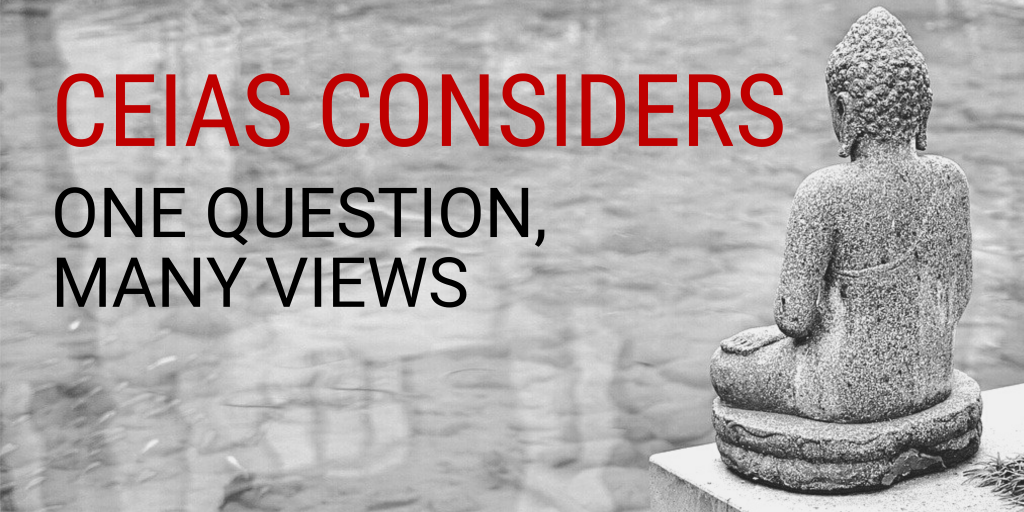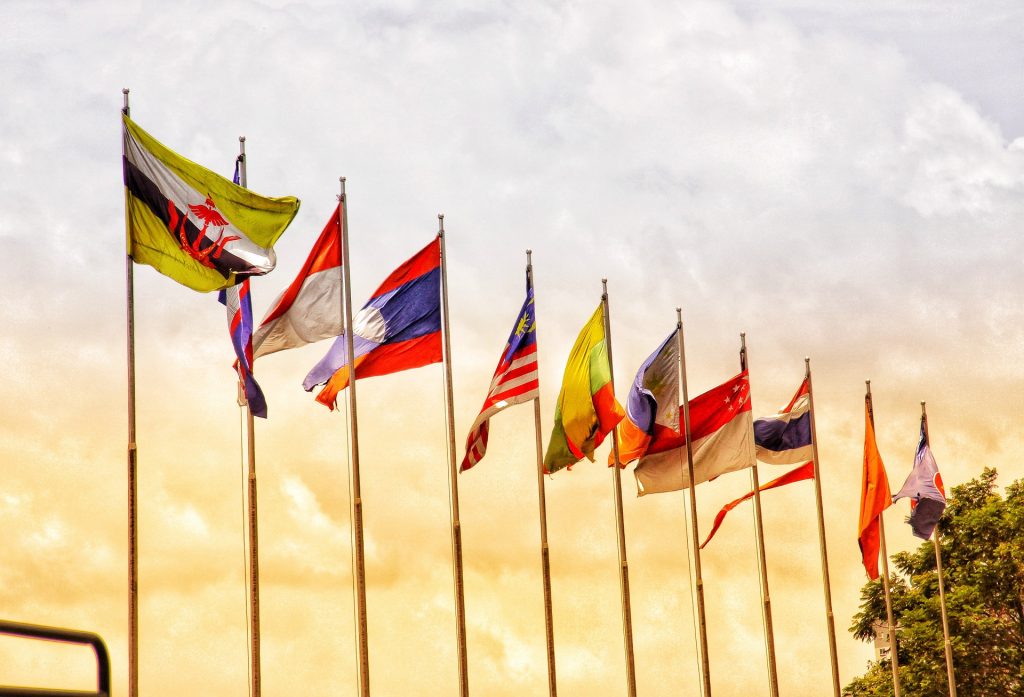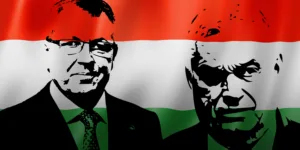
How far can the EU go in Southeast Asia?
With the ASEAN Summit taking place this week, CEIAS Considers asked experts how EU relations are progressing with the Association of Southeast Asian Nations (ASEAN) bloc, and what’s the future of this new strategic partnership.
 Alfred Gerstl
Alfred Gerstl
President of CEIAS
One month ago, the European Union released its Strategy for Cooperation in the Indo-Pacific strategy. Therein the Association of Southeast Asian Nations (ASEAN) figures prominently, as the only existing transregional structures and cooperation formats in the Indo-Pacific, e.g., the ASEAN Regional Forum and the East Asia Summit, were established by ASEAN. Accordingly, the EU emphasizes ASEAN’s regional centrality. However, this centrality is under challenge, as China and the US compete for influence in the region.
The EU is the main investor in Southeast Asia and a provider of official development assistance; it is also a key trade partner. However, in the realm of security, its influence is severely limited. Thus, the value of the EU as a potential counterweight for ASEAN against the US and China is reduced.
The EU’s institutional relations with ASEAN date back to 1977, when they became dialogue partners. Since then the collaboration deepened gradually, culminating in a strategic partnership in December 2020. Moreover, reflecting its aim to globally sponsor regional cooperation, the EU provides capacity-building and technical support for ASEAN. More recently, in response to China’s Belt and Road Initiative, the EU promotes in its Europe-Asia Connectivity and Global Gateway strategy infrastructure collaboration. As these initiatives cannot financially match the BRI, the focus is on offering quality infrastructure.
There currently exists no political friction between the EU and ASEAN. However, the EU’s values-based approach focused on the promotion of democracy and human rights, may not resonate well with the political leaders in a region which mostly consists of semi-democratic and authoritarian regimes.
In general, though, the Southeast Asian elites regard the EU very positively, albeit not as a role model. Due to the emphasis on sovereignty and non-interference in domestic affairs, ASEAN will deliberately not develop into a supranational organization. The EU is viewed as a key partner for upholding the rules-based, ASEAN-centered order and international law in the Indo-Pacific. Diplomatic support from Brussels for ASEAN is especially crucial in regard to the South China Sea dispute. 40 percent of European trade passes through the South China Sea. However, the EU has not strongly criticized Beijing’s lack of compliance with the China-critical award of the Permanent Court of Arbitration in 2016. This failure reveals political fault lines within the EU: Hungary and Greece, both current members of the 16+1 cooperation format, so far undermined a stronger endorsement of the award. Furthermore, the South China Sea dispute demonstrates that the EU lacks the necessary military power to play a more prominent role in the region. After Brexit, only France has appropriate naval capabilities.
Concerning further economic cooperation with ASEAN, the EU is not overly ambitious in reviving the talks on an EU-ASEAN free trade agreement. Rather, the EU seeks agreements with individual ASEAN members such as Singapore (2019) and Vietnam (2021). Without such a bloc-to-bloc agreement, there is a high risk that the EU misses out on trade liberalization and jointly setting standards in Southeast Asia which grow economically increasingly together.
Looking ahead, the EU and ASEAN will further deepen their relations, albeit mostly in politically less sensitive matters such as connectivity, human security, cultural and scientific exchange. Aside from diplomatic support for ASEAN, a credible contribution to maintaining security in Southeast Asia, notably in the South China Sea, cannot be expected from the EU.
 Patryk Kugiel
Patryk Kugiel
Analyst at the Polish Institute of International Affairs’ Asia-Pacific program
The EU-ASEAN strategic partnership signed last December opened a new chapter in a 40-year-old relationship. Yet, its future will depend on a play of chess played on a much larger board. The key holds the Indo-Pacific and the EU strategy to the region published on 16th September offers some hope for closer engagement.
ASEAN is mentioned 34 times in the EU document – more than any other partner. As a regional organization inhabited by 640 million consumers, and the third-largest trading partner with more than €189.47 billion of trade in goods and €93.5 trade in services, ASEAN is obviously seen as an economic opportunity. Therefore the strategy vows to finalize free trade agreement negotiations (with Thailand, Malaysia, the Philippines, and Indonesia) and hope to strike a deal with the whole of ASEAN in the future. Yet, strategic considerations are more important.
EU strategy is strikingly similar to ASEAN Outlook to Indo-Pacific (published in 2019) and the two appear as like-minded partners with converging views of “inclusive, open, cooperative and rules-based Indo-Pacific”. They reject emerging bipolarity and pressure to take sides in increasingly harsh US-China rivalry. What is critically important, the EU explicitly endorses the ASEAN centrality idea in the Indo-Pacific. Though the European strategy is not anti-China, it promises to promote freedom of navigation and to push back on areas where “fundamental disagreements exist”.
The EU and ASEAN take a more pragmatic approach by focusing on major economic and developmental challenges in the region. The EU document suggests seven priority areas for cooperation: Sustainable and inclusive prosperity; Green transition; Ocean governance; Digital governance and partnerships; Connectivity; Security and defense; Human security. Each of these offers vast opportunities for closer cooperation.
Two major challenges may stand in the way of closer cooperation. One is troublesome human rights records in some ASEAN members (like Myanmar, Cambodia). The EU must find a way to strengthen democracy in the region without lecturing and imposing its solutions on Asian partners. Second, is the historical inability of the EU to turn words into deeds. To implement the Indo-Pacific strategy and start new initiatives in the region, while competing with China, the EU must suggest additional funding. Without new sources of financing, the strategy will remain on paper only.
The two must also take bold steps to give more visibility and raise the profile of their joint stance in the region, for instance by inviting the EU to join the East Asia Summit. In uncertain times of growing tensions, the EU and ASEAN must act as stabilizing and cooperative forces. While working on closer bilateral EU-ASEAN ties in many fields both can contribute to multilateralism and rules-based regional architecture.
For Poland, the stronger EU and ASEAN partnership offers a comfortable avenue to engage more in the Indo-Pacific, without taking sides in Sino-US competition. It is interested in both huge market and business opportunities as well as stabilization of the region. Poland hopes for better access to the ASEAN market and will support stronger EU engagement in the region.






